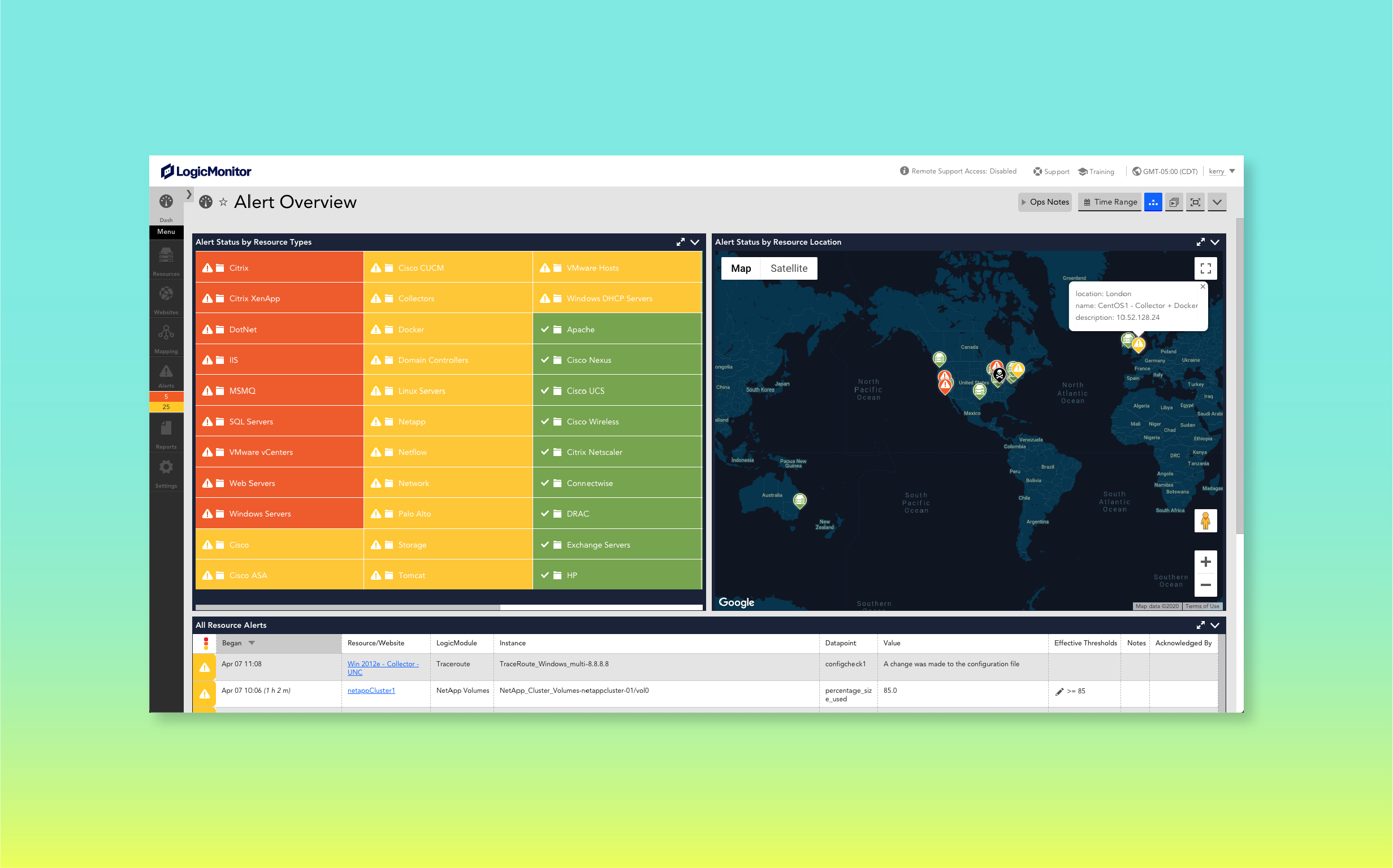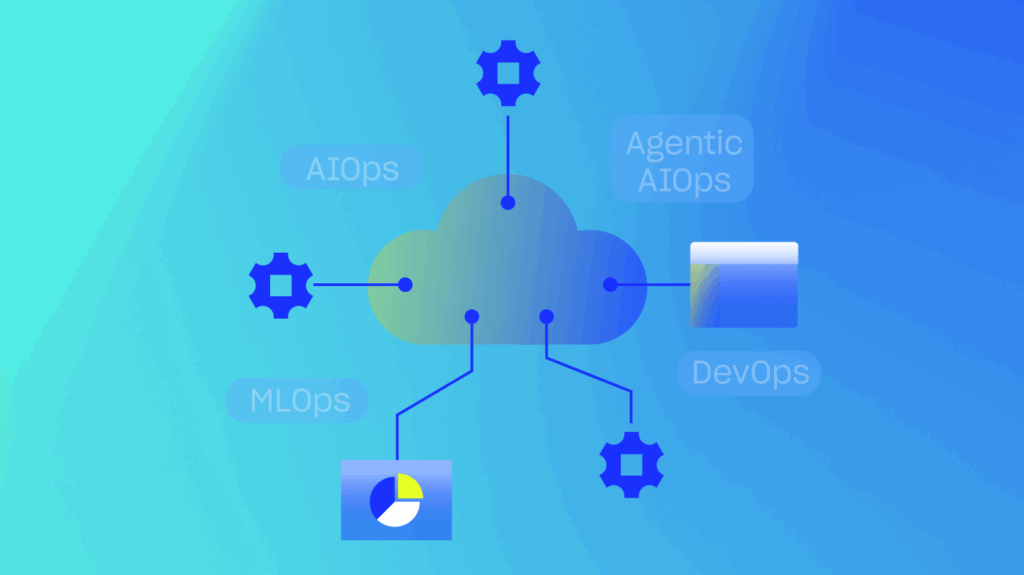As you navigate IT event vs incident management, the terms might sound similar, but knowing the difference is key. Your IT teams need to spot the right signals early, whether it’s a harmless event or a red flag that needs immediate attention, so they can keep systems running smoothly.
Why does this matter? Understanding when an event becomes an incident helps you respond faster, avoid downtime, and prevent small issues from turning into big problems. It also keeps your team focused on what really matters: delivering a reliable service and a better experience for your customers.
In simple terms, IT event management is about monitoring and logging what’s happening across your systems. It’s a passive process that helps you track events and spot patterns over time.
Incident management, on the other hand, is active. It kicks in when something breaks unexpectedly, requiring immediate investigation and action to fix the issue and prevent it from happening again.
Let’s break these terms down further.
TL;DR




What Is an Event?
In IT operations, an event is any observable change or occurrence within your systems. It could be something routine, like a user login or an API call, or more technical, like a spike in CPU utilization that doesn’t yet affect performance.
By detecting and logging these events, you build a historical record that helps you spot patterns and potential issues before they escalate. Over time, this data becomes critical for identifying trends that could impact system reliability or customer experience.
Based on the criticality of those issues, you’ll prioritize the events in your log and act to resolve the more urgent events first. You’ll likely have an associated alert if the event is of utmost importance. In those customer-impacting scenarios, the event becomes an incident, and your team will work to resolve it.
What Is IT Event Management?
IT event management is about keeping a close eye on everything happening across your systems, tracking events, spotting patterns, and deciding when something needs attention. While most events are routine, some signal potential risks that could impact performance or customer experience.
Tools like LogicMonitor take the busywork out of monitoring by filtering out the noise and calling attention to what’s actually worth your time. With smart event correlation and targeted alerts, your team can skip the endless low-priority notifications and focus on fixing real issues before they turn into bigger problems.
What Is the IT Event Management lifecycle?
IT event management is a process; you can better understand and address it when you have a better sense of what it looks like and how it works. Here’s a quick run-through of the IT event management lifecycle, with the steps that are part of the process.
- Occurrence: an event occurs in your IT systems.
- Detection: your IT monitoring tool detects the event.
- Record: your system log records the event.
- Notification: depending on the severity or status of the event, your system may raise an alert and notify your team about the event’s occurrence.
- Correlation: your system will analyze the event to determine how it compares with other events based on predefined parameters. Based on those findings, your system may determine that the event is an incident, so you can take action to resolve it.
- Response: your system will gather and record more details about the event. If the event is causal, your system may resolve the issue or flag it for a team member to resolve it. The system may also gather additional context on the incident or event.
- Closure: the incident is closed when the appropriate action or response has been taken. The system will log the response. Then, the incident or event will be updated and completed.
The IT event management lifecycle is an ongoing process. It’s not one-and-done. The lifecycle will continue through all the events and incidents flagged and resolved through your workflow and business operations.
What Is an incident?
An incident is an unplanned event that disrupts normal IT services and can directly impact your business or your customers. These are the moments when things go wrong, whether it’s a system outage, a failed database connection, or a security breach. Often, alerts are already in place to flag incidents as they happen, helping your team jump into action before the issue grows.
It’s important to remember that not every event becomes an incident. If an event doesn’t affect customer experience or critical operations, it likely doesn’t need immediate action. But when it does, for example, when service latency prevents customers from completing a checkout in your e-commerce app, it’s a clear sign your team needs to step in fast.
If an event does not directly impact the customer or their experience, it’s probably not severe enough to warrant an immediate flag and resolution. You may categorize your incidents into major, repetitive, or complex criticality types. For each type of incident, you should be prepared to dedicate the proper response to the criticality of the event that’s taking place.
What Is IT Incident Management?
Incident management is about how you respond to interruptions in your IT services. When you encounter an unexpected event (a network outage, a failed deployment, or a critical application crash), your system can flag the event and ensure a quick and effective resolution.
While many organizations handle incidents reactively, the most effective teams stay ahead of problems. They look for patterns, address root causes, and put safeguards in place to stop repeat issues before they happen. This proactively improves service reliability and reduces Mean Time to Resolution (MTTR), getting things back on track faster and keeping disruptions to a minimum.
How Event Correlation Helps Identify Incidents Faster
Data flows in from every direction. Event correlation allows for the collection and filtering of events, so you can focus on the patterns inherent in the events. Then, with careful study, you can better gauge which events are most important, which ones may threaten your security, and how to reduce the noise to resolve the incidents quickly and effectively.
Cut through the noise, fix what matters, and keep your team moving forward.
With the help of advanced tools like SIEM (Security Information and Event Management) and AIOps platforms, event correlation cuts through the noise. These solutions group related events, flag anomalies, and highlight potential incidents before they escalate. Helping you respond faster and reduce downtime.
Reducing alert fatigue and eliminating distractions with event correlation frees up your teams to focus on higher-value work and long-term system improvements.
Why Understanding the Event and Incident Difference Matters
Think of it like this, if you’re treating every routine system event like it’s a full-blown crisis, your team will constantly be in firefighting mode. But when you know the difference between an event and an incident, you can cut through the noise, stay focused, and fix the problems that actually impact your business.
Here’s why that matters:
- Faster MTTR: Your teams spend less time sifting through low-level alerts and more time fixing real issues, getting things back on track faster.
- Lower Operational Costs: Time is money. Reducing false alarms means fewer wasted hours and a smarter use of resources.
- Better SLA Performance: When you’re faster to resolve incidents, you hit your service targets more consistently and keep your promises to customers.
- Smarter Use of Your Team: With clearer priorities, your team isn’t stuck chasing dead-end alerts. They’re freed up to work on improvements that move the business forward.
Less busywork, more meaningful progress, and a better experience for both your team and your customers.
Common Mistakes in Managing Events and Incidents
When it comes to managing events and incidents, it’s easy to fall into patterns that feel productive but actually slow your team down. One of the most common mistakes is treating every event like it’s a major incident. Not every system blip needs an all-hands-on-deck response. If your team jumps into action for every routine update or minor log entry, they’ll quickly burn out. And worse, they might miss the events that truly deserve immediate attention.
On the flip side, some teams ignore low-severity events altogether, assuming they aren’t worth the time. But those small issues are often early warning signs. Ignoring them is like brushing off a warning light on your car’s dashboard. By the time the real problem shows up, it’s a lot harder (and more expensive) to fix.
Another roadblock is a lack of clear escalation paths. When incidents do happen, confusion about who’s responsible can waste valuable time. Without a well-defined plan for how and when to escalate, teams end up scrambling just to figure out who’s on point.
And finally, there’s the trap of overcomplicating incident categorization. Sure, it’s helpful to classify incidents, but if your system is bogged down with too many categories and unclear definitions, you’re adding friction instead of creating clarity. Simple, actionable categories keep things moving and help your team focus on what they do best. Solving real problems, fast.
Not every system blip needs a full-on response. Save the firefighting for real fires.
What Are the Biggest Challenges for Incident and Event Management?
As you face the realities of incident and event management, you’ll notice that you’ll constantly encounter challenges affecting your entire workflow. Furthermore, with these monumental challenges, you’ll see why they repeatedly occur and how they adversely affect your company’s growth and success.
Staff Utilization
While you may have great employees, you may not have prepared them to handle the incidents your business faces. It may be a matter of training or how your team is organized. Whatever the root causes may be, your challenge is that you cannot quickly and effectively monitor and address the incidents. Your team is just not able to handle those incidents.
Cost
Cost is always a challenge for incident and event management. The cost of bringing on support staff and investing in the necessary tools can be expensive. The growing list of requirements includes automation, email and phone systems, intelligence, support ticketing and monitoring platforms, and more. This may be one of the most daunting challenges you face.
Communications
You need to maintain accurate and productive communications with your team and customers. Communication challenges are usually not as simple as they sound, though. You need to identify incidents and events quickly. Then, you need to alert your team and work to resolve the issues.
Ineffective and haphazard communications with staff and customers can lead to further problems. For example, if you haven’t determined a plan of action or which channels you’ll use for regular communications, your incident and its resolution could quickly snowball into further challenges. Poor communication can lead to issues with retention, customer dissatisfaction, and even employee morale issues.
How Do You Deal With These Challenges?
Dealing with the challenges of incident and event management is an ongoing process. Think of it like building muscle memory for your team. Clear processes, the right tools, and consistent communication turn chaos into calm when things go off track.
It doesn’t happen overnight, but these challenges also go to the very core of your company. As you address these issues, you’re reiterating the values that your company believes in. Here are some ways to deal with those challenges in incident and event management.
Knowledge
Training and a comprehensive knowledge base are just two pieces of what should be an ongoing effort to fully onboard and bring your staff to its full effectiveness. You can and should develop flowcharts, tip sheets, diagrams, and other helpful documentation if needed.
Then, put those essential resources to work for you. Your staff will only be able to effectively identify and resolve incidents if they have the knowledge and training they need to succeed. Put them into action while ensuring they’ll take steps to resolve the incident quickly and effectively.
Quick Knowledge Checklist:
- Create simple process diagrams and flowcharts for common incidents
- Keep documentation up to date and easily accessible
- Run regular scenario-based training to keep response skills sharp
Cost
The solution to cost is often a multi-tiered approach. As you invest in automation, better and faster platforms, and effective communication channels (phone, email, chat, and messaging), your team will work smarter, not harder. While you’ll deal with costs up front for many of these solutions, you and your company will reap the benefits for years to come.
You’ll also be able to prevent and resolve incidents faster, which ensures a better user experience. A faster, more effective resolution also improves your staff’s morale. Workplace satisfaction has known benefits, including maintaining a productive and satisfied team. And a great team delivers an ongoing and positive impact on speed and conversions.
Frameworks like ITIL can help guide these investments by focusing efforts on the processes that deliver the greatest long-term value.
Communications
Ultimately, so much of the success or failure of incident and event management comes down to effective communication. While companies often overlook communication, it’s the best way to build relationships, share information across the organization, and foster trust. With the right strategic approach and planning, you can weather nearly any crisis, especially if you maintain effective communication.
Of course, communication doesn’t just happen, and there are always ways that you can be more effective with your communication efforts. First, focus on being proactive instead of reactive while you collect the data about the incident or event. Then, as you respond to the incidents, remember that your actions and words can either build the relationship or destroy it.
While you might worry about saying the wrong thing to your team and customers, your effort and dedication to keeping them in the loop make a difference. Think and plan to make the most out of your communication efforts now and in the future.
Having a pre-defined communication plan means you’re not scrambling for words when every second counts. Here are a few tips.
Define an incident
You should know what makes up an incident, how critical it has to be, and what you’ll do and say about it. While you don’t necessarily have to offer all the solutions in the first 60 seconds, you should know how you plan to proceed when an incident happens.
Communication channels
As you implement dedicated tools and resources, your team and customers will know what’s going on and how you plan to resolve every incident promptly. Of course, you’ll also need to specify which channels to use for incident communication. Then, be consistent with your regular communications to your customers and employees.
Update your status
A quick status page on your website is one of the most common go-to solutions for incident management. It takes just a few minutes to update it when there’s a known incident, and then you can post the resolution. In addition, it helps your teams and customers trust you more because you’re transparent about what’s happening and what you’re doing to fix the issue.
Target your alerts
Your goal is to keep your team and customers updated on your status, but you should also tailor your communication efforts to the right audience. For example, you may offer different messaging and reports to your team than what you share with your customers or prospects.
Make it easy
When you’re in the middle of an incident, you probably only have a little time to put together the right messaging for your audience. That’s why it’s essential to think ahead and tailor templates to various scenarios, making it quick and easy to get the messaging out there immediately.
Ensure a professional and timely response
Your customers and team will remember how you handled the situation, what you said, and how quickly you responded. If it’s a minor incident, a single message might be enough. However, with a significant and ongoing incident, keep your team and customers updated. You want them to be sure of what’s going on. Worse yet, you don’t want to ignite frustration.
With your IT services, unexpected incidents happen despite your planning and prevention efforts. Even though you’d love to avoid those situations altogether, it’s more helpful to accept the inevitability of incidents. Then, you can put plans and materials in place with incident management and event management.
Your goal is to ensure those incidents don’t adversely affect your productivity or customer experience efforts. So, take steps to rise above potentially disruptive incidents with a stronger, more resilient team and regular communication to ensure that you’re offering the timely support and services your customers need. Those efforts go a long way in achieving the customer success and satisfaction that they deserve and expect.
And remember, tools like LogicMonitor can help simplify much of this by automating event detection, streamlining communication workflows, and reducing the manual effort needed to stay ahead of incidents.
Take Control of Your Incident and Event Management
Managing events and incidents doesn’t have to feel like putting out fires all day. With the right tools and a clear strategy, you can move from reactive to proactive, reduce downtime, and give your team the space to focus on what really drives your business forward.
Subscribe to our blog
Get articles like this delivered straight to your inbox







